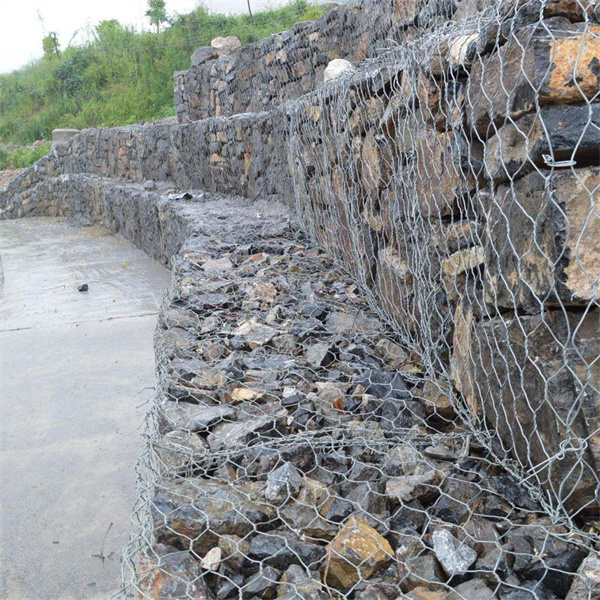Nov . 09, 2024 09:30 Back to list
Manufacturers of Durable Gabion Wall Systems for Effective Landscaping and Erosion Control Solutions
The Rise of Gabion Wall Systems A Comprehensive Overview
In recent years, the construction industry has witnessed a growing trend towards the use of gabion wall systems. These structures, made from wire mesh containers filled with stones, offer a range of benefits that make them an attractive option for both commercial and residential projects. As environmental concerns and the need for sustainable construction practices become increasingly important, gabion walls provide a viable solution. This article explores the features of gabion wall systems, their advantages, and the role of factories in production.
What are Gabion Wall Systems?
Gabion wall systems are composed of rectangular or cylindrical cages filled with rocks, stones, or other suitable materials. These cages are typically made from steel wire and can be filled on-site with locally sourced material, making them both adaptable and cost-effective. Gabion walls can be used for various applications, including retaining walls, erosion control, sound barriers, and decorative features in landscaping.
Advantages of Gabion Wall Systems
1. Eco-Friendly One of the most significant advantages of gabion walls is their ecological benefits. Since they are often filled with local materials, they minimize the carbon footprint associated with transporting construction materials. Furthermore, the permeable nature of gabion walls allows water to flow through, reducing run-off and promoting natural drainage.
2. Durability and Strength Gabion walls are exceptionally resilient. The steel wire used to construct the cages is usually coated to resist rust and corrosion, ensuring longevity. Additionally, the weight of the stones within the cages helps stabilize the wall, making it effective against forces such as soil pressure or water erosion.
3. Versatile Design Gabion walls can be customized to suit various architectural styles and environments. They can be constructed in varying heights and widths, allowing them to fit seamlessly into diverse landscapes. The fill material can also be chosen based on aesthetic preferences, ranging from natural stones to colorful aggregates.
4. Cost-Effective Compared to traditional concrete or masonry walls, gabion walls are often more economical. The use of locally sourced materials can significantly reduce costs associated with transportation and labor. In addition, the installation process is relatively straightforward and can often be handled with minimal specialized equipment.
gabion wall systems factories

5. Rapid Installation Gabion walls can be constructed quickly, which is an added advantage for projects with tight timelines. The modular nature of the cages allows for efficient assembly, and the flexibility in materials means that construction can proceed even in adverse weather conditions.
The Role of Factories in Gabion Wall Production
The production of gabion wall systems involves specialized factories that manufacture the wire cages and supply the necessary materials. These factories play a crucial role in ensuring quality and consistency in production. The wire used must meet specific standards in terms of strength, corrosion resistance, and durability.
Modern factories leverage advanced technology to streamline the manufacturing process. Automated systems can cut, bend, and weld wires to create the cages efficiently. Quality control measures are implemented throughout the production process to ensure every gabion meets industry standards. Moreover, factories often provide additional services such as custom-sizing cages or pre-filling them with specific materials, catering to the unique requirements of each project.
Future Trends in Gabion Wall Systems
As the demand for sustainable construction continues to rise, gabion wall systems are likely to gain even more popularity. Innovations in materials, such as the use of recycled plastics in wire production, are being explored to enhance the eco-friendliness of gabion systems further. Additionally, the integration of smart technology into construction processes, such as using sensors for monitoring wall stability and environmental impact, could revolutionize how gabion walls are designed and maintained.
Conclusion
Gabion wall systems are emerging as a powerful solution in modern construction. With their plethora of benefits, including environmental sustainability, durability, and cost-effectiveness, they are well-suited for a wide range of applications. As factories continue to innovate and enhance production methods, the future of gabion walls looks bright, promising a blend of functionality and aesthetic appeal in the landscape of construction.
-
Why PVC Coated Gabion Mattress Is the Best Solution for Long-Term Erosion Control
NewsMay.23,2025
-
Gabion Wire Mesh: The Reinforced Solution for Modern Construction and Landscape Design
NewsMay.23,2025
-
Gabion Wall: The Flexible, Seismic-Resistant Solution for Modern Landscaping and Construction
NewsMay.23,2025
-
Gabion Wall Solutions: The Durable, Decorative, and Affordable Choice for Every Landscape
NewsMay.23,2025
-
Gabion Basket: The Durable and Flexible Alternative to Traditional Retaining Walls
NewsMay.23,2025
-
Gabion Basket: The Proven Solution for Slope Stability and Flood Control
NewsMay.23,2025
-
Versatility of Chain Link Fence Gabion
NewsMay.13,2025






